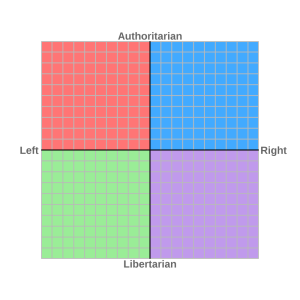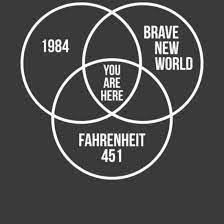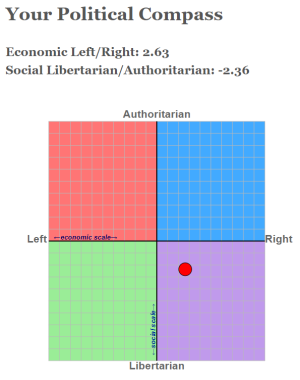volbound1700
Well-Known Member
- Joined
- Sep 18, 2007
- Messages
- 6,693
- Likes
- 9,023
I started personally writing an article about it but the media and world at large really messes up political ideologies. You really can't just have a left and right.
A great example is Germany.
So Naziism is considered far right... alright...
Well, on that definition, where would a German who supports the return of the Kaiser and is a Monarchist fall? They are definitely ultra-conservative but their belief system is not that of Nazism. In fact, they maybe pro-Jewish and multi-national. What if they wanted a return to the Holy Roman Empire that included other nationalities like Italians and Czechs?
Also, far left usually indicates anarchy or no government control but Communist regimes, notably USSR and PRC, have heavy government control. Is Communism really far left because it has traits that indicate far right?
The system is broken. In fact, Fascism has more in common with Communism than any other system (which is ironically as they were bitter enemies). Both believe in strong government control (even control over the corporations/economies), both have cults of leadership, both favor militarism, both advocate world domination. The only real difference is that Communism is Globalistic in views and not based on Nationalism (focus on race) while Fascism advocates Nationalism (race). In most other aspects, the two ideologies are similar.
In theory, both the Democrats and Republicans are left-wing parties in history as neither, truly, supports a dedicated strong government and the Democrats/far left, would actually be further right than Republicans as they are advocating more government control (Socialism). Far Right would be Communism and Fascism while Far Left would be Anarchists. Center right would be Kings/Queens as Monarchies did not have the level of government control that you saw in Fascism. (Basically most of Europe in the 1600 and 1700s would be center-right)
A great example is Germany.
So Naziism is considered far right... alright...
Well, on that definition, where would a German who supports the return of the Kaiser and is a Monarchist fall? They are definitely ultra-conservative but their belief system is not that of Nazism. In fact, they maybe pro-Jewish and multi-national. What if they wanted a return to the Holy Roman Empire that included other nationalities like Italians and Czechs?
Also, far left usually indicates anarchy or no government control but Communist regimes, notably USSR and PRC, have heavy government control. Is Communism really far left because it has traits that indicate far right?
The system is broken. In fact, Fascism has more in common with Communism than any other system (which is ironically as they were bitter enemies). Both believe in strong government control (even control over the corporations/economies), both have cults of leadership, both favor militarism, both advocate world domination. The only real difference is that Communism is Globalistic in views and not based on Nationalism (focus on race) while Fascism advocates Nationalism (race). In most other aspects, the two ideologies are similar.
In theory, both the Democrats and Republicans are left-wing parties in history as neither, truly, supports a dedicated strong government and the Democrats/far left, would actually be further right than Republicans as they are advocating more government control (Socialism). Far Right would be Communism and Fascism while Far Left would be Anarchists. Center right would be Kings/Queens as Monarchies did not have the level of government control that you saw in Fascism. (Basically most of Europe in the 1600 and 1700s would be center-right)





